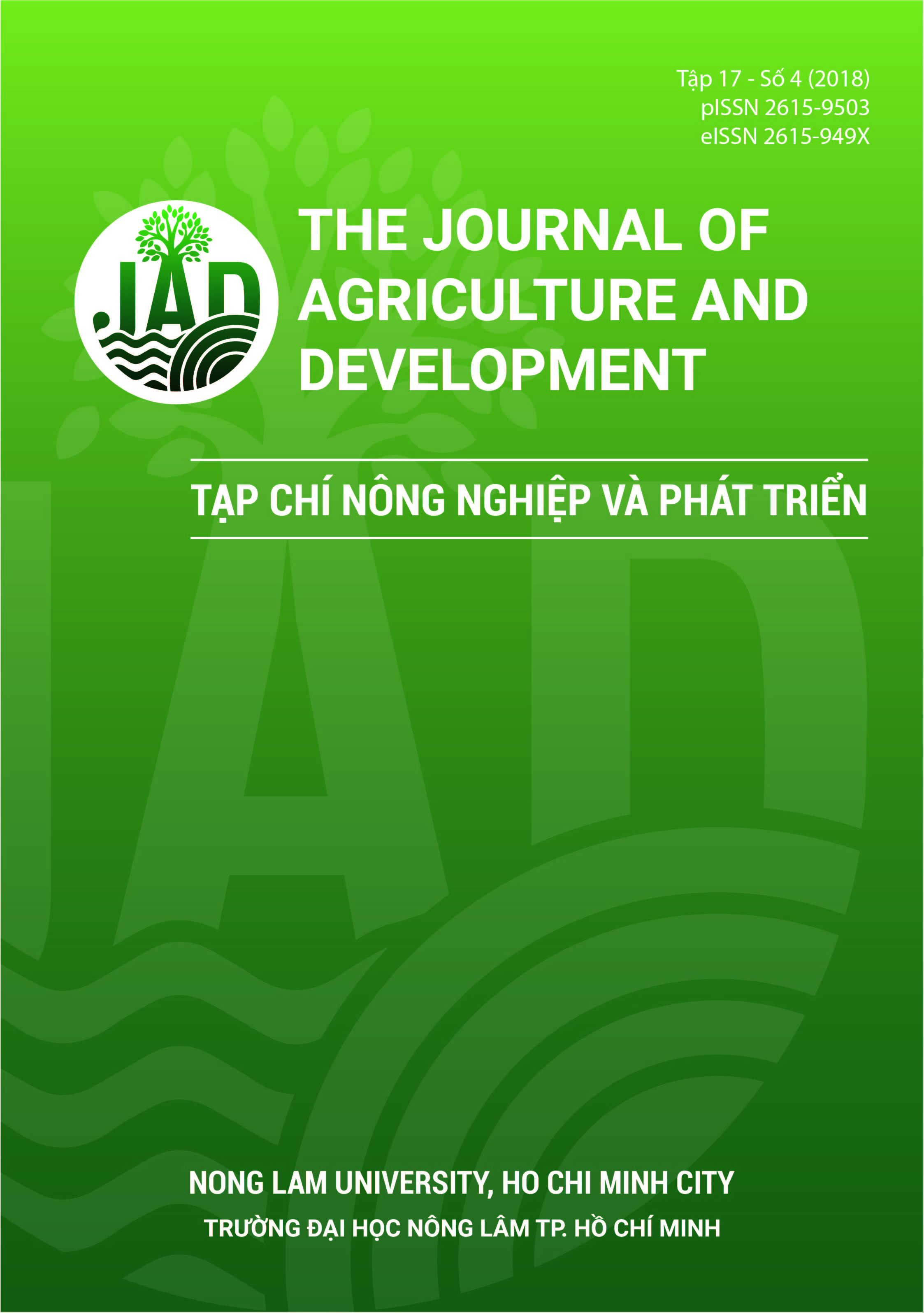Structural characteristics, quality and plant biodiversity in forest types at Xuan Son national park, Phu Tho province
Main Article Content
Abstract
Forest structure plays a very important role in the sustainable management of forest resources. Research established 20 plots. The plot area is 900 m2(30 m×30 m) for 4 forest types: IIA, IIB, IIIA1 and IIIA3. Results showed that average diameter of four stages is IIA: 11.25 cm; IIB: 12.81 cm; II: 1: 15.94 cm and IIIA3: 20.30 cm. The mixed linear model demonstrated that growth in both diameter and height between forest states was significantly different (P < 0.05). Weibull and J-shape functions can simulate well for 75% of experimental distributions. Path analysis showed that for all four states, direct influence (AHTT) had a greater absolute value than the indirect effect (AHGT). Principal component analysis diagrams showed that for all four types, the quality of forest trees was closely related to canopy width, total height and diameter at breast height. The difference in the quality of the trees between the four states was really significant, as the Sig value of the Chi-square test is 0.000 (less than 0.05). Stages IIA and IIB had mainly species of pioneer species, while IIIA1 and IIIA3 had more shade tolerant species. Stage IIIA3 had the highest level of species diversity.
Article Details
References
Bui, H. M. (2016). Structure and restoration of natural secondary forests in the Central Highlands, Vietnam. Dresden, Germany: Dresden University of Technology.
Bui, H. M., & Bui, D. T. (2017). Applying linear mixed model (LMM) to analyze forestry data, checking autocorrelation and random effects, using R. Journal of Forestry Science and Technology 2, 17-26.
Bui, H. M., & Le, T. X. (2017). Changes in structure and quality of natural forest overstorey in Kon Ka Kinh National Park, Gia Lai. Journal of Forestry Science 3, 85-95.
Gao, T., Hedblom, M., Emilson, T., & Nielsen, B. A. (2014). The role of forest stand structure as biodiversity indicator. Forest Ecology and Management 330, 82-93. https://doi.org/10.1016/j.foreco.2014.07.007
Ho, R. (2013). Handbook of Univariate and Multivariate Data Analysis with IBM SPSS (2nd ed.) Florida, USA: CRC Press.
Kint, R., & Coe, R. (2005). Tree diversity analysis: A manual and software for common statistical methods for ecological and biodiversity studies. Nairobi, Kenya: World Agroforestry Centre.
Nguyen, T. H., Vu, H. T., & Ngo, K. K. (2006). Statistics in forestry. Ha Noi, Vietnam: Agricultural Publishing House.
Richards, P. W. (1996). The tropical rain forest: An ecological study. Cambridge, United Kingdom: Cambridge University Press.
Rubén, V. (2015). Forest structure indicators based on tree size inequality and their relationships to airborne laser scanning. University of Eastern Finland, Kuopio, Finland.
Shiver, B. D., & Borders, B. E. (1996). Sampling techniques for forest resources inventory. New York, USA: John Wiley & Sons.
Spies, T. A. (1998). Forest Structure. In MacKinno, A., & Trofymow, J. A. (Eds.). Proceedings of a workshop on Structure, Process, and Diversity in Successional Forests of Coastal British Columbia. Washington, USA: Washington State University Press.
Spies, T. A., & Franklin, J. F. (1996). The diversity and maintenance of old-growth forests. In Szaro, R. C., & Johnston, D. W. (Eds.). Biodiversity in managed Landscapes: Theory and Practice. New York, USA: Oxford University Press.
Tran, Q. H. (2010). Participation of community management in the buffer zone of Xuan Son National Park in Phu Tho province (Unpublished bachelor’s thesis). Thai Nguyen University, Thai Nguyen, Vietnam.
Vu, H. T., & Pham, G. B. (1996). Forest investigation. Ha Noi, Vietnam: Agricultural Publishing House.
Zar, J. H. (2010). Biostatistical Analysis (5th ed.). New Jersey, USA: Prentice Hall, Upper Saddle River.








